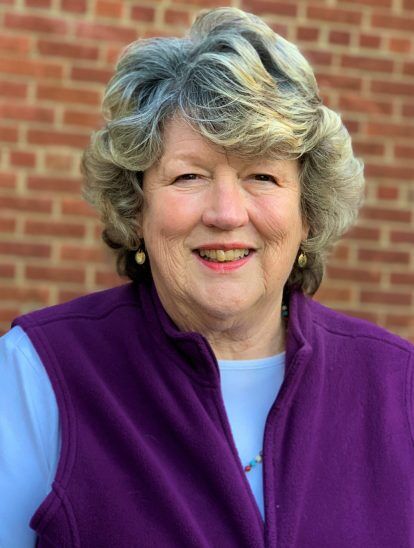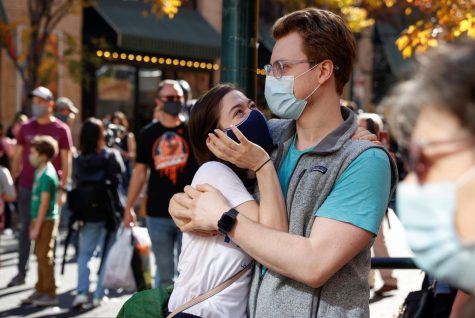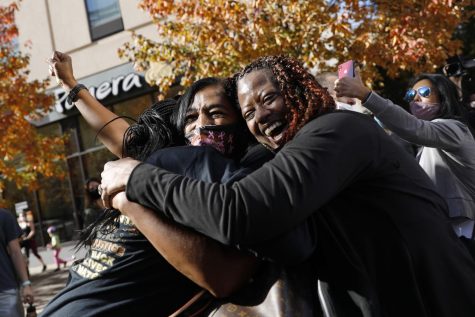What to expect at the polls this upcoming election
October 6, 2020
Whether this is your first election or not, there are many things those planning on voting or working in-person at the polls on Election Day will need to know for this upcoming election.
“First of all, [patrons] should educate themselves on who’s on the ballot and what issues are on the ballot,” Jane Preston Rose, the 14th president of the League of Women Voters, said. “There are several ways to do that, VOTE411 is a wonderful resource.”
NEW & RETURNING VOTERS AT THE POLLS
“When you come into the polling location, we have what’s called any-line any-time,” Theresa Nielsen, the deputy director for the Portage County Board of Elections (BOE), explained. “You would check in at a poll pad and walk up to whoever’s available and present identification.”
Identification can be a valid driver’s license, state ID, a utility bill, bank statement or check that has your name and address on it, Nielsen said.
“Next, you’ll be asked to state your name and your current address,” Nielsen said. “That information will be checked against what is on the poll pad. If the information that you provide matches, then they will scan the barcode on your ballot.”
The barcodes are located on the bottom of the ballot, which attaches a stub number to your record. The point of these barcodes is to show who has filled out a ballot and who has not. After scanning, the stub is removed from the ballot to ensure anonymity, Nielsen said.
“Then, you will be presented with the appropriate ballot, a secrecy sleeve, a ballot receipt and a pen,” Nielsen said.
The secrecy sleeve is a manila folder and is where you keep your ballot until turning it in. The ballot receipt is a slip that will have your name, stub number and precinct on it, Nielsen said.
“Once you’re finished voting your ballot, you’re going to take it to our optical scanner where you will scan your ballot,” Nielsen said. “Then you will return the secrecy sleeve, pen and the receipt to our scanner judge, and they’ll give you a sticker and you’ll be done.”
NEW & RETURNING POLL WORKERS AT THE POLLS
“They are super organized,” said Rose, who has often volunteered as a poll worker, or precinct election official (PEO), since she retired in 2014. “[PEOs] have to do at least two hours of training. We get a book of instructions and everything is step by step.”
Each precinct has four PEOs, two democrats and two republicans. One of the PEOs is the voting location manager. This person is in charge of coming to the BOE office the Saturday before an election to pick up the ballots and other necessary items. They arrive at 5:45 a.m. on Election Day and oversee everything, including ensuring all PEOs are present and calling the BOE office if anyone is missing, Rose and Nielsen said.
“[The PEOs] all take an oath, sign a payroll sheet and then start to get things ready for the day,” Nielsen said. “That includes putting up the postings that we give them to put on the wall, getting the electronic poll pad ready for voters, getting the optical scan machines and ADA-complaint ExpressVote machine booted up and ready to go and making sure all of the supplies that they need, such as ballots, secrecy sleeves and pens, are set up on the tables.”
All PEOs will have their temperatures taken in the beginning of the day. After everything is set up and ready to go, the PEOs will decide who gets to go to lunch at what time. Starting at 11 a.m., each PEO gets an hour-long lunch break, Nielsen said.
“Then positions are assigned,” Nielsen said. “For each precinct, there’s somebody who will operate the poll pad, someone who will person the provisional ballot table, someone who will be a ballot person, handing the person operating the poll pad the appropriate ballot when requested, and somebody who stands at the scanner.”
Nielsen noted that in bigger locations, there will also be a greeter who is responsible, at least in this election, to make sure that people who are coming into the polling location are wearing a mask and offer one to those who don’t, and to make sure that people maintain the six feet of social distancing while they’re standing in line and will point voters in the direction of open polling pads so they can start on their voting process.
WHAT’S DIFFERENT DUE TO COVID-19
Due to the COVID-19 pandemic, there are additional precautions being taken at all polling locations on Election Day for both voters and poll workers.
“[The polling locations] are going to be very socially distanced,” Rose said. “Poll workers are going to ask voters to wear masks. If they don’t wear masks, however, we can’t send them away.”
In addition, there will be multiple hand sanitizers available for voters to use. There will also be wipes and gloves offered to voters when utilizing the writing utensils, although it is not mandatory. Bringing your own pen for filling out the ballot is also an option, as long as it is a blue or black ink pen, not gel, Rose and Nielsen said.
“Voter’s should also expect lines to be longer,” Nielsen said. “Because we’ll be socially distancing, the lines will appear to be longer since people won’t be standing right next to each other.”
PEOs are required to wear a face covering of some sort. Those who cannot wear one due to medical reasons will be provided with a face shield. The BOE volunteers are making sanitizer kits for the poll workers, which includes a mask, face shield and four sets of gloves for each PEO. The gloves and second face coverings are offered as additional protective measures; wearing them is not mandatory, Rose and Nielsen said.
PEOs should know that food is no longer allowed to be provided. You will have to bring your own food or leave to get food on your break, Rose said.
“We encourage people to vote absentee,” Nielsen said. “It’s just easier for us to control a single polling location as far as PPE and cleaning versus 54 polling locations, which is what we have on Election Day. People should be patient and realize that a PEO’s workday is very long. Remember to be kind and don’t give them a hard time.”
Becca Sagaris is a reporter. Contact her at [email protected].























